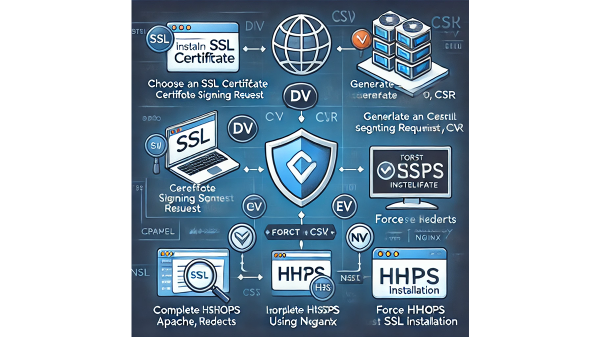Top 10 Health Insurance Myths Debunked
| Myth | Reality |
|---|---|
| Health insurance is only for sick people | Accidents and unexpected illnesses can happen to anyone, making insurance essential. |
| Employer-provided health insurance is always the best | Individual plans may offer better coverage based on personal needs. |
| The cheapest plan is the best plan | Low-cost plans may come with high deductibles and limited coverage. |
| Pre-existing conditions are not covered | Under the ACA, pre-existing conditions must be covered. |
| Health insurance covers everything | Some treatments, medications, and elective procedures may not be covered. |
| You can only buy insurance during open enrollment | Special Enrollment Periods allow sign-ups after major life events. |
| Young and single people don’t need health insurance | Unexpected medical expenses can be financially devastating. |
| Health insurance is too expensive | Subsidies and employer-sponsored plans make coverage affordable. |
| Out-of-network doctors are not covered | Some plans provide partial coverage for out-of-network services. |
| Health insurance covers all medications | Each plan has a formulary listing covered drugs and costs. |
Health insurance is one of the most important aspects of financial planning and healthcare management. However, misconceptions about health insurance often prevent people from making informed decisions. Misinformation can lead to inadequate coverage, unexpected expenses, or missed opportunities for better healthcare. In this article, we will debunk the top 10 health insurance myths to help you make smarter choices.
Myth 1: Health Insurance Is Only for Sick People
Reality: Many people believe they do not need health insurance if they are young and healthy. However, accidents, unexpected illnesses, and medical emergencies can happen to anyone at any time. Without insurance, even a minor medical procedure can lead to significant out-of-pocket expenses. Preventive care, which is often included in health plans, also helps maintain good health and catch potential issues early.
Myth 2: Employer-Provided Health Insurance Is Always the Best Option
Reality: While employer-sponsored health insurance plans are convenient and often subsidized, they may not always be the best fit for your needs. Some employer plans may have limited coverage options, high deductibles, or restricted provider networks. It is always a good idea to compare employer-provided plans with individual or family plans to ensure you get the best coverage for your situation.
Myth 3: The Cheapest Plan Is the Best Plan
Reality: A low-cost health insurance plan may seem attractive, but it can come with high deductibles, limited coverage, and high out-of-pocket expenses. Choosing a plan should be based on more than just the premium cost. Consider factors such as copayments, coinsurance, network restrictions, and the services covered before deciding on the best plan for you and your family.
Myth 4: Pre-Existing Conditions Are Not Covered
Reality: Under the Affordable Care Act (ACA), insurance companies cannot deny coverage or charge higher premiums based on pre-existing conditions. This ensures that individuals with chronic illnesses, past medical conditions, or genetic predispositions have access to the healthcare they need. However, it’s always advisable to check the specifics of a plan before purchasing.
Myth 5: Health Insurance Covers Everything
Reality: While health insurance provides essential coverage, it does not cover everything. Many plans do not include dental, vision, or alternative treatments such as acupuncture. Additionally, elective procedures, cosmetic surgeries, and certain medications may not be covered. Always review your policy details to understand what is and isn’t included.
Myth 6: You Can Only Buy Health Insurance During Open Enrollment
Reality: While the open enrollment period is the standard time to buy or switch health insurance plans, there are exceptions. Special Enrollment Periods (SEPs) allow you to enroll outside of open enrollment if you experience qualifying life events such as marriage, childbirth, loss of previous coverage, or relocation. Additionally, Medicaid and the Children’s Health Insurance Program (CHIP) accept applications year-round.
Myth 7: You Don’t Need Health Insurance If You’re Young and Single
Reality: Being young and single does not make you immune to accidents or illnesses. Even a short hospital stay or emergency room visit can cost thousands of dollars without insurance. Additionally, many health insurance plans offer free or low-cost preventive care services that can help maintain long-term health and catch potential health problems early.
Myth 8: Health Insurance Is Too Expensive
Reality: Many people assume they cannot afford health insurance, but there are numerous affordable options available. Government subsidies, employer-sponsored plans, and state Medicaid programs make coverage accessible for many individuals. The cost of being uninsured can be significantly higher due to medical bills and emergency expenses.
Myth 9: Out-of-Network Doctors and Hospitals Are Not Covered at All
Reality: While it is true that out-of-network providers generally cost more, some health insurance plans still offer partial coverage for out-of-network services. Preferred Provider Organization (PPO) plans, for example, allow patients to visit out-of-network providers at a higher cost than in-network providers. It is important to understand your plan’s network and coverage details before seeking care.
Myth 10: Health Insurance Covers All Medications
Reality: Not all prescription drugs are covered by every health insurance plan. Each plan has a formulary, or a list of covered drugs, which may categorize medications into different tiers with varying costs. Some drugs may require prior authorization or step therapy before coverage applies. If you take specific medications, check whether they are included in your plan’s formulary before choosing a policy.
Conclusion
Understanding health insurance is crucial for making informed decisions about your coverage and healthcare. By debunking these common myths, you can choose a plan that best fits your needs and avoid costly misunderstandings. Always take the time to read policy details, compare options, and seek professional guidance if necessary. Having the right health insurance plan can provide financial protection and peace of mind for you and your family.














